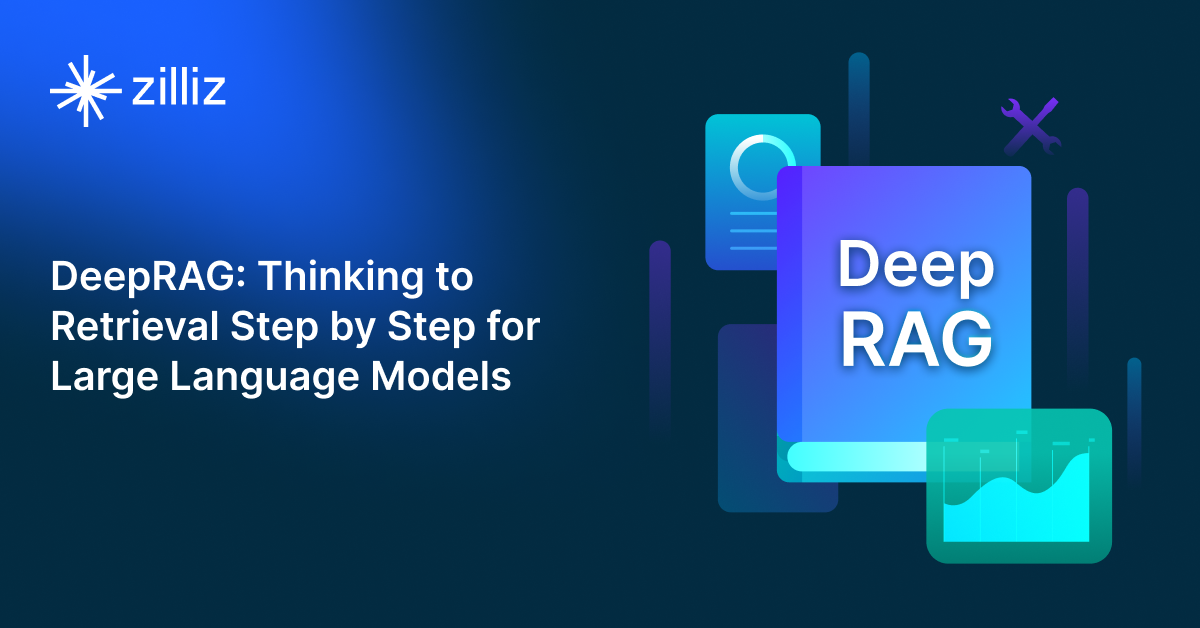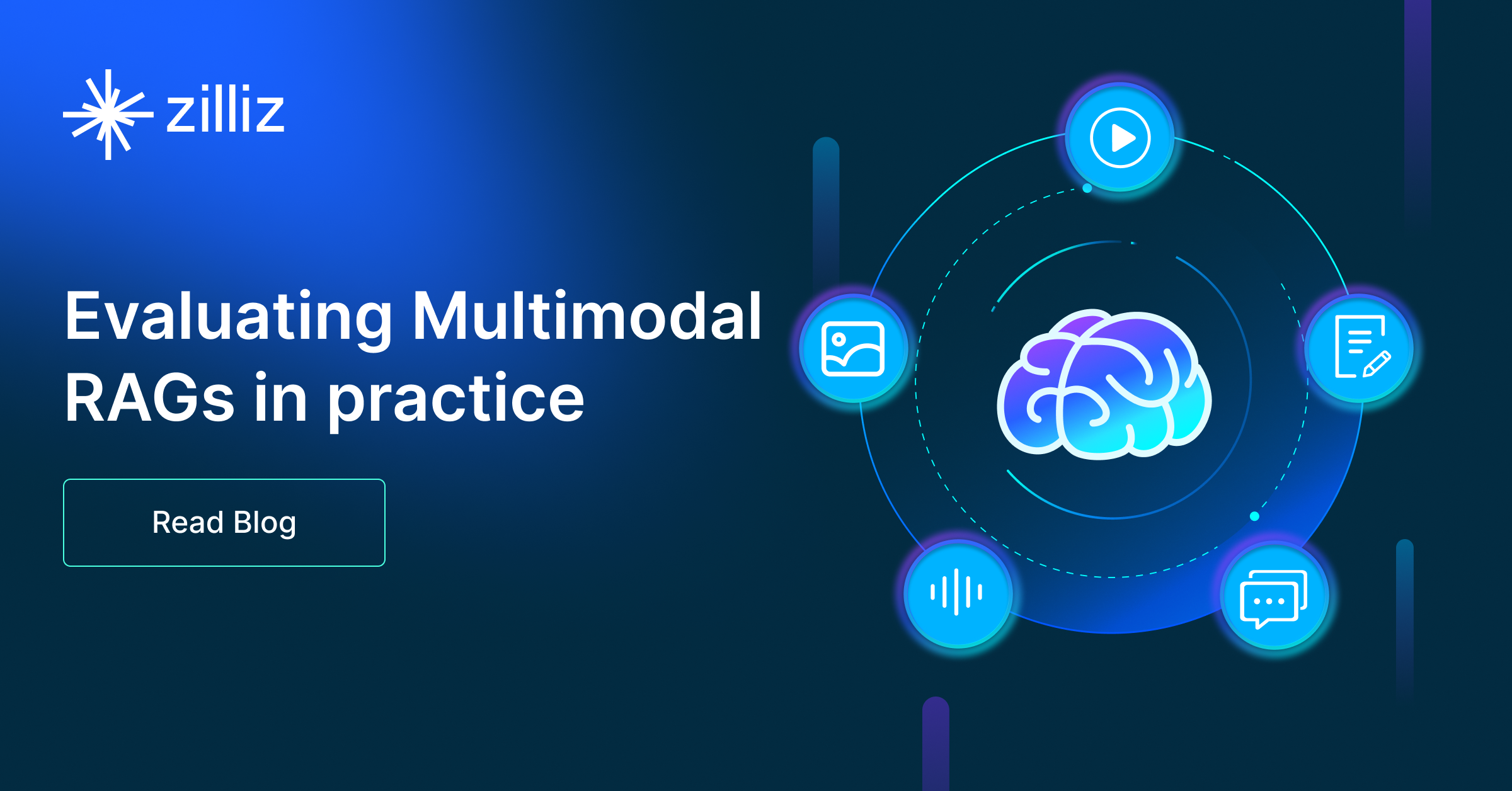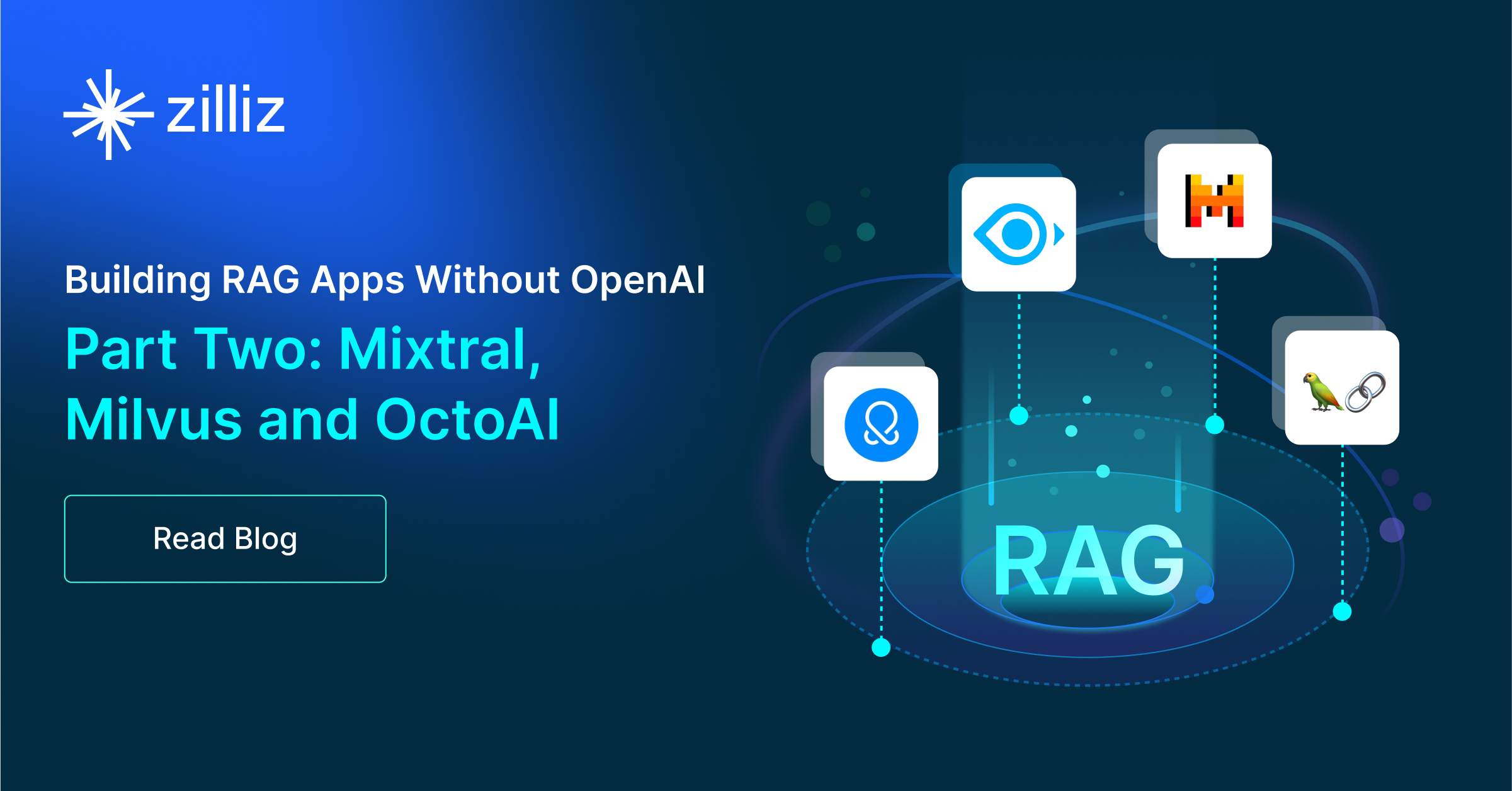Build RAG Chatbot with LangChain, Milvus, OpenAI GPT-4o mini, and NVIDIA embed-qa-4
Introduction to RAG
Retrieval-Augmented Generation (RAG) is a game-changer for GenAI applications, especially in conversational AI. It combines the power of pre-trained large language models (LLMs) like OpenAI’s GPT with external knowledge sources stored in vector databases such as Milvus and Zilliz Cloud, allowing for more accurate, contextually relevant, and up-to-date response generation. A RAG pipeline usually consists of four basic components: a vector database, an embedding model, an LLM, and a framework.
Key Components We'll Use for This RAG Chatbot
This tutorial shows you how to build a simple RAG chatbot in Python using the following components:
- LangChain: An open-source framework that helps you orchestrate the interaction between LLMs, vector stores, embedding models, etc, making it easier to integrate a RAG pipeline.
- Milvus: An open-source vector database optimized to store, index, and search large-scale vector embeddings efficiently, perfect for use cases like RAG, semantic search, and recommender systems. If you hate to manage your own infrastructure, we recommend using Zilliz Cloud, which is a fully managed vector database service built on Milvus and offers a free tier supporting up to 1 million vectors.
- OpenAI GPT-4o mini: This model is a compact version of the advanced GPT-4 architecture, designed for efficiency and lower resource consumption. It delivers strong performance in natural language understanding and generation tasks, making it ideal for chatbot implementations, content creation, and interactive applications where responsiveness and cost-effectiveness are crucial.
- NVIDIA embed-qa-4: This model specializes in question answering tasks, leveraging cutting-edge embedding techniques to enhance accuracy and comprehension. Its strengths lie in understanding context and retrieving precise information effectively. Ideal for applications in customer support, educational platforms, and any domain needing rapid, context-aware responses to user inquiries.
By the end of this tutorial, you’ll have a functional chatbot capable of answering questions based on a custom knowledge base.
Note: Since we may use proprietary models in our tutorials, make sure you have the required API key beforehand.
Step 1: Install and Set Up LangChain
%pip install --quiet --upgrade langchain-text-splitters langchain-community langgraph
Step 2: Install and Set Up OpenAI GPT-4o mini
pip install -qU "langchain[openai]"
import getpass
import os
if not os.environ.get("OPENAI_API_KEY"):
os.environ["OPENAI_API_KEY"] = getpass.getpass("Enter API key for OpenAI: ")
from langchain.chat_models import init_chat_model
llm = init_chat_model("gpt-4o-mini", model_provider="openai")
Step 3: Install and Set Up NVIDIA embed-qa-4
pip install -qU langchain-nvidia-ai-endpoints
import getpass
import os
if not os.environ.get("NVIDIA_API_KEY"):
os.environ["NVIDIA_API_KEY"] = getpass.getpass("Enter API key for NVIDIA: ")
from langchain_nvidia_ai_endpoints import NVIDIAEmbeddings
embeddings = NVIDIAEmbeddings(model="NV-Embed-QA")
Step 4: Install and Set Up Milvus
pip install -qU langchain-milvus
from langchain_milvus import Milvus
vector_store = Milvus(embedding_function=embeddings)
Step 5: Build a RAG Chatbot
Now that you’ve set up all components, let’s start to build a simple chatbot. We’ll use the Milvus introduction doc as a private knowledge base. You can replace it with your own dataset to customize your RAG chatbot.
import bs4
from langchain import hub
from langchain_community.document_loaders import WebBaseLoader
from langchain_core.documents import Document
from langchain_text_splitters import RecursiveCharacterTextSplitter
from langgraph.graph import START, StateGraph
from typing_extensions import List, TypedDict
# Load and chunk contents of the blog
loader = WebBaseLoader(
web_paths=("https://milvus.io/docs/overview.md",),
bs_kwargs=dict(
parse_only=bs4.SoupStrainer(
class_=("doc-style doc-post-content")
)
),
)
docs = loader.load()
text_splitter = RecursiveCharacterTextSplitter(chunk_size=1000, chunk_overlap=200)
all_splits = text_splitter.split_documents(docs)
# Index chunks
_ = vector_store.add_documents(documents=all_splits)
# Define prompt for question-answering
prompt = hub.pull("rlm/rag-prompt")
# Define state for application
class State(TypedDict):
question: str
context: List[Document]
answer: str
# Define application steps
def retrieve(state: State):
retrieved_docs = vector_store.similarity_search(state["question"])
return {"context": retrieved_docs}
def generate(state: State):
docs_content = "\n\n".join(doc.page_content for doc in state["context"])
messages = prompt.invoke({"question": state["question"], "context": docs_content})
response = llm.invoke(messages)
return {"answer": response.content}
# Compile application and test
graph_builder = StateGraph(State).add_sequence([retrieve, generate])
graph_builder.add_edge(START, "retrieve")
graph = graph_builder.compile()
Test the Chatbot
Yeah! You've built your own chatbot. Let's ask the chatbot a question.
response = graph.invoke({"question": "What data types does Milvus support?"})
print(response["answer"])
Example Output
Milvus supports various data types including sparse vectors, binary vectors, JSON, and arrays. Additionally, it handles common numerical and character types, making it versatile for different data modeling needs. This allows users to manage unstructured or multi-modal data efficiently.
Optimization Tips
As you build your RAG system, optimization is key to ensuring peak performance and efficiency. While setting up the components is an essential first step, fine-tuning each one will help you create a solution that works even better and scales seamlessly. In this section, we’ll share some practical tips for optimizing all these components, giving you the edge to build smarter, faster, and more responsive RAG applications.
LangChain optimization tips
To optimize LangChain, focus on minimizing redundant operations in your workflow by structuring your chains and agents efficiently. Use caching to avoid repeated computations, speeding up your system, and experiment with modular design to ensure that components like models or databases can be easily swapped out. This will provide both flexibility and efficiency, allowing you to quickly scale your system without unnecessary delays or complications.
Milvus optimization tips
Milvus serves as a highly efficient vector database, critical for retrieval tasks in a RAG system. To optimize its performance, ensure that indexes are properly built to balance speed and accuracy; consider utilizing HNSW (Hierarchical Navigable Small World) for efficient nearest neighbor search where response time is crucial. Partitioning data based on usage patterns can enhance query performance and reduce load times, enabling better scalability. Regularly monitor and adjust cache settings based on query frequency to avoid latency during data retrieval. Employ batch processing for vector insertions, which can minimize database lock contention and enhance overall throughput. Additionally, fine-tune the model parameters by experimenting with the dimensionality of the vectors; higher dimensions can improve retrieval accuracy but may increase search time, necessitating a balance tailored to your specific use case and hardware infrastructure.
OpenAI GPT-4o mini optimization tips
GPT-4o mini is a smaller and more cost-effective variant of GPT-4o, making it ideal for low-latency RAG applications. Optimize retrieval by limiting the number of retrieved documents to only the most relevant, ensuring the model does not get overloaded with unnecessary context. Structure prompts effectively by using bullet points or numbered lists to enhance clarity and focus. Keep temperature at 0.1–0.2 for factual responses, adjusting top-p and top-k values to refine output precision. Implement caching for frequently accessed queries to minimize API calls and reduce costs. For high-throughput applications, batch process multiple queries to optimize API efficiency. Stream responses to improve interactivity in real-time applications. If using GPT-4o mini in a multi-model pipeline, consider using it for simpler tasks while reserving larger models for complex reasoning.
NVIDIA embed-qa-4 optimization tips
NVIDIA embed-qa-4 is a high-performance embedding model optimized for question-answering tasks in RAG systems. Improve retrieval efficiency by generating embeddings at both the document and sentence levels, allowing for granular matching. Use similarity threshold tuning to balance precision and recall when retrieving documents. For large-scale applications, employ GPU-accelerated ANN search frameworks such as FAISS with optimized indexing parameters. Cache frequently used embeddings to reduce API overhead and speed up query processing. When handling dynamic knowledge bases, implement scheduled re-embedding of updated documents to maintain search relevance. Consider fine-tuning retrieval pipelines by integrating metadata-based filters alongside vector search for improved contextual accuracy.
By implementing these tips across your components, you'll be able to enhance the performance and functionality of your RAG system, ensuring it’s optimized for both speed and accuracy. Keep testing, iterating, and refining your setup to stay ahead in the ever-evolving world of AI development.
RAG Cost Calculator: A Free Tool to Calculate Your Cost in Seconds
Estimating the cost of a Retrieval-Augmented Generation (RAG) pipeline involves analyzing expenses across vector storage, compute resources, and API usage. Key cost drivers include vector database queries, embedding generation, and LLM inference.
RAG Cost Calculator is a free tool that quickly estimates the cost of building a RAG pipeline, including chunking, embedding, vector storage/search, and LLM generation. It also helps you identify cost-saving opportunities and achieve up to 10x cost reduction on vector databases with the serverless option.
 Calculate your RAG cost
Calculate your RAG cost
What Have You Learned?
Wow, what a journey it’s been! In this tutorial, you’ve learned how to harness the power of an innovative framework alongside a dynamic vector database, a sophisticated LLM, and a transformative embedding model to build your very own cutting-edge RAG (Retrieval-Augmented Generation) system.
You saw firsthand how the framework, with its seamless integration capabilities, serves as the glue that holds everything together, allowing each component to work in harmony. The vector database, like a speedy librarian, enables rapid searches, instantly connecting you to relevant information without skipping a beat. Meanwhile, the LLM, powered by OpenAI's latest advancements, empowers your applications with conversational intelligence, bringing a human touch to interactions. Adding to this, the embedding model generates rich semantic representations of your data, ensuring that your system understands context like never before.
And let’s not forget those golden tips for optimization and the handy free cost calculator that will help you fine-tune your projects without breaking the bank. Now, armed with this knowledge, you’re ready to dive in and experiment!
So why wait? Start building, optimizing, and innovating your own RAG applications today. The possibilities are endless, and I can't wait to see what you create!
Further Resources
🌟 In addition to this RAG tutorial, unleash your full potential with these incredible resources to level up your RAG skills.
- How to Build a Multimodal RAG | Documentation
- How to Enhance the Performance of Your RAG Pipeline
- Graph RAG with Milvus | Documentation
- How to Evaluate RAG Applications - Zilliz Learn
- Generative AI Resource Hub | Zilliz
We'd Love to Hear What You Think!
We’d love to hear your thoughts! 🌟 Leave your questions or comments below or join our vibrant Milvus Discord community to share your experiences, ask questions, or connect with thousands of AI enthusiasts. Your journey matters to us!
If you like this tutorial, show your support by giving our Milvus GitHub repo a star ⭐—it means the world to us and inspires us to keep creating! 💖
- Introduction to RAG
- Key Components We'll Use for This RAG Chatbot
- Step 1: Install and Set Up LangChain
- Step 2: Install and Set Up OpenAI GPT-4o mini
- Step 3: Install and Set Up NVIDIA embed-qa-4
- Step 4: Install and Set Up Milvus
- Step 5: Build a RAG Chatbot
- Optimization Tips
- RAG Cost Calculator: A Free Tool to Calculate Your Cost in Seconds
- What Have You Learned?
- Further Resources
- We'd Love to Hear What You Think!
Content
Vector Database at Scale
Zilliz Cloud is a fully-managed vector database built for scale, perfect for your RAG apps.
Try Zilliz Cloud for Free


